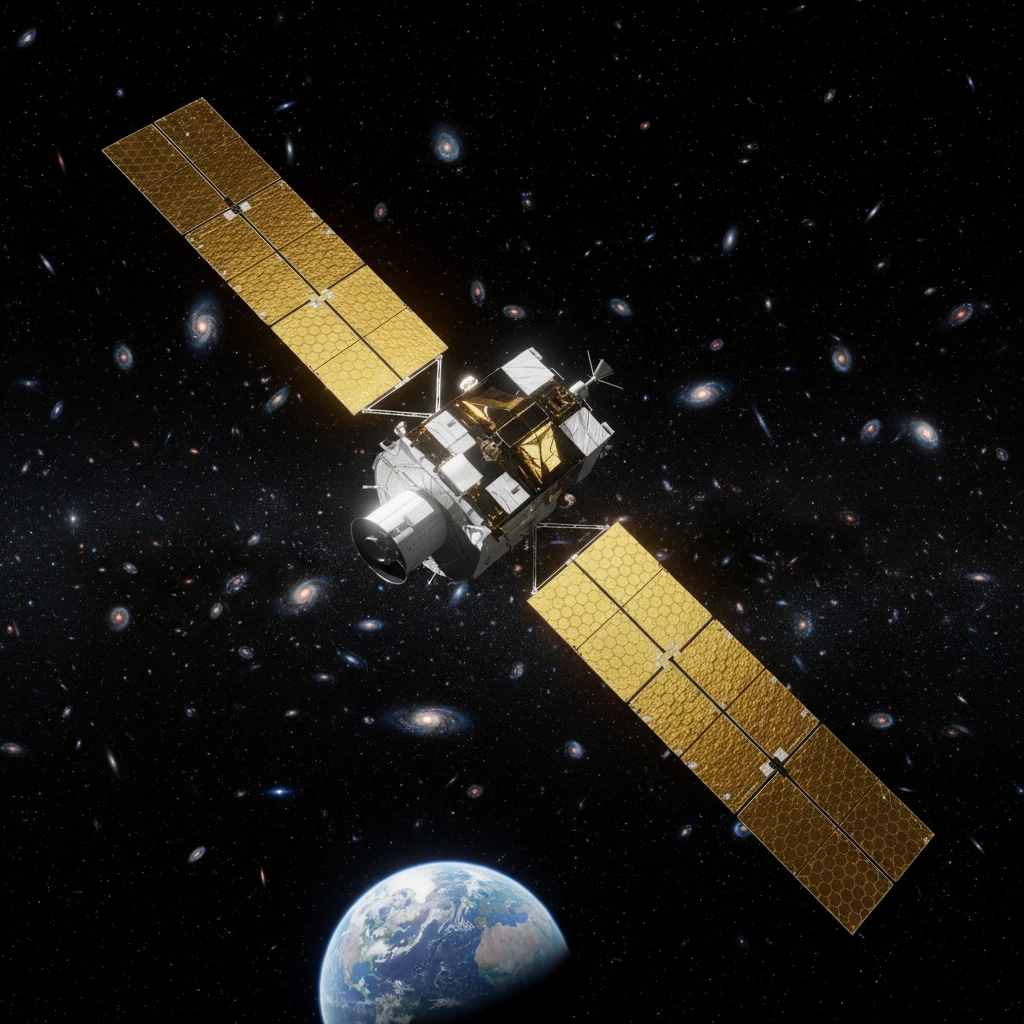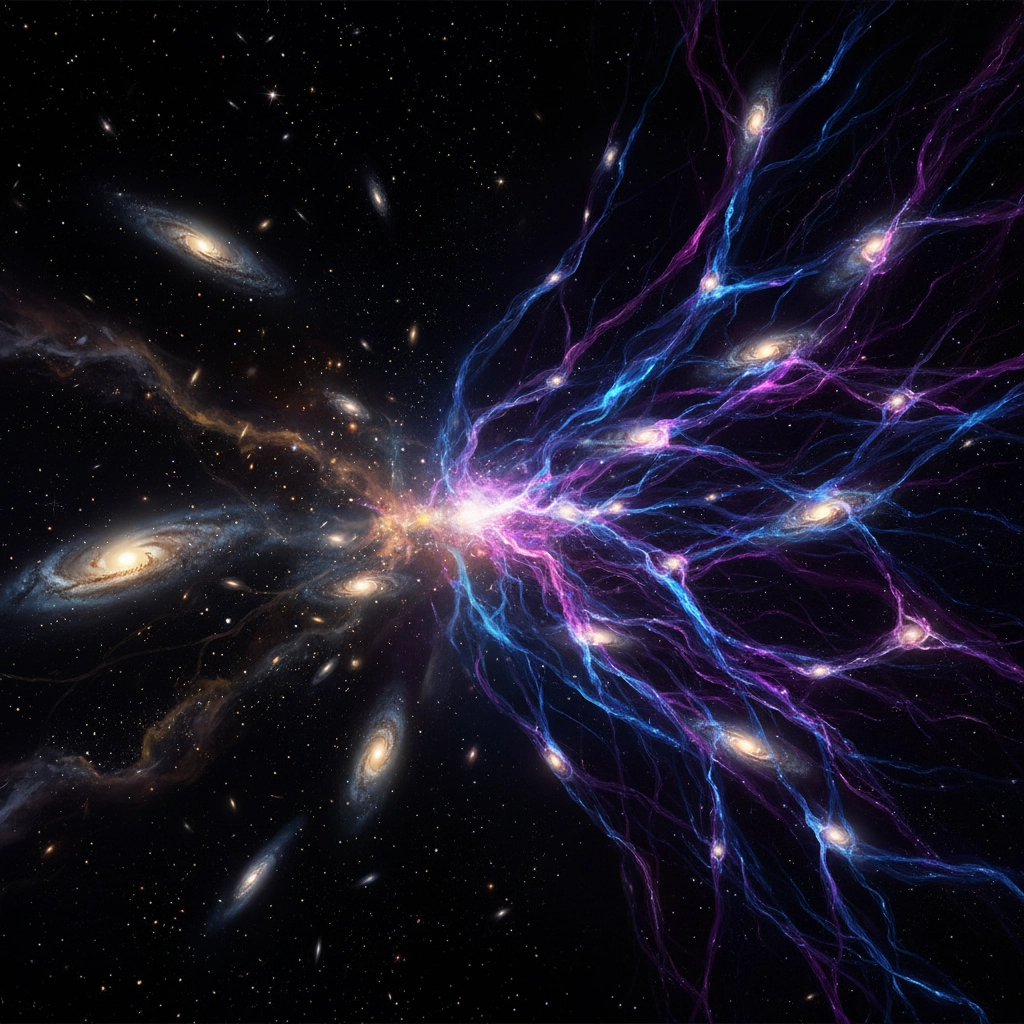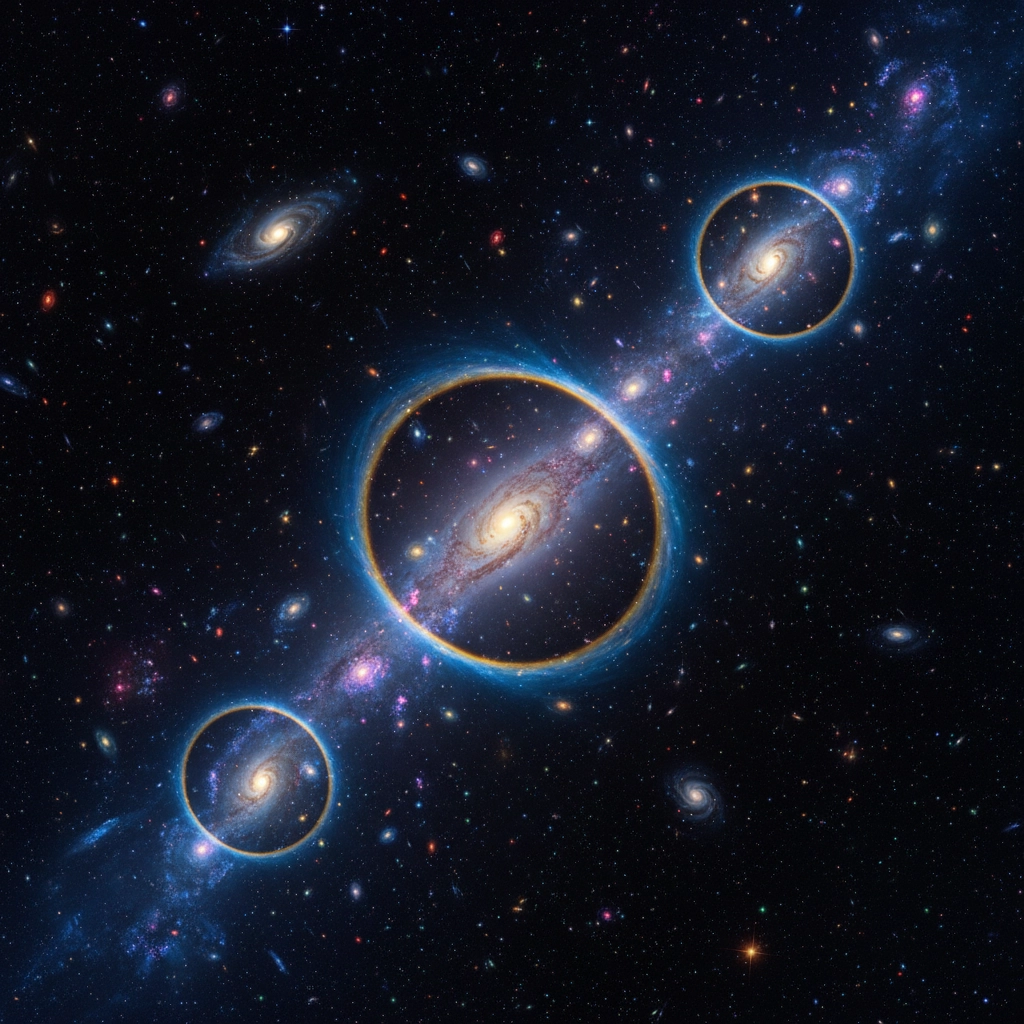The Euclid satellite secrets of the universe are finally coming into focus, revealing the mysteries that lie between the stars and inspiring a new generation of space travelers.
Have you ever gazed up at a star-filled night sky and wondered what mysteries lie hidden in the darkness between those twinkling lights? What if we told you that everything you can see, every star, planet, and galaxy, makes up less than 5% of the universe? The rest is an invisible cosmic puzzle that a remarkable satellite called Euclid is now helping us solve.
Launched by the European Space Agency in July 2023, Euclid represents one of humanity’s most ambitious quests to understand the cosmos. This isn’t just another space telescope, it’s a cosmic detective on a six-year mission to map the “dark universe” and unlock secrets that could revolutionize our understanding of existence itself.
How the Euclid Satellite Secrets of the Universe Are Revealed
Unlike the famous Hubble or James Webb telescopes that capture stunning images of individual cosmic objects, Euclid has a different mission entirely. Think of it as the universe’s first comprehensive surveyor, methodically photographing one-third of the entire sky to create the most detailed 3D map of space ever attempted.
Professor Adam Amara from the University of Surrey, one of the key scientists involved in the mission, explains that Euclid will observe the shapes and positions of over two billion galaxies, some so distant their light has traveled for more than 10 billion years to reach us. That means we’re literally looking back in time, watching the universe as it was when it was just a young cosmic toddler.
The Euclid satellite secrets of the universe provide insights we only dreamed possible

Hunting the Invisible: Dark Matter and Dark Energy Explained
Here’s where things get mind-bending. Scientists have discovered that our universe is composed of roughly:
- 5% ordinary matter (atoms that make up stars, planets, and yes, you and me)
- 27% dark matter (invisible substance that acts like cosmic scaffolding)
- 68% dark energy (mysterious force accelerating the universe’s expansion)
Imagine trying to understand a city by only seeing 5% of its buildings: that’s essentially humanity’s current view of the universe. Dark matter doesn’t emit, absorb, or reflect light, making it completely invisible to our eyes and traditional telescopes. We only know it exists because of its gravitational effects on visible matter.
Dark energy is even stranger. It’s the force that’s not just expanding the universe, but accelerating that expansion. Picture blowing up a balloon: but instead of your breath slowing down, it somehow gets stronger and faster over time.
Euclid’s Revolutionary Discoveries
Since beginning operations, Euclid has already made remarkable discoveries that would make any space enthusiast’s heart race. In just its first year, the satellite has:
- Spotted “rogue planets” floating freely through space without orbiting any star
- Discovered new star clusters in distant galaxies
- Captured Einstein rings: cosmic phenomena where gravity bends light from distant objects
- Identified previously unknown dwarf galaxies hiding in plain sight

The telescope works by detecting subtle distortions in galaxy shapes caused by dark matter’s gravitational pull: a technique called weak gravitational lensing. It’s like being a cosmic forensic investigator, using clues in the evidence to track down an invisible suspect.
With every image, the Euclid satellite secrets of the universe come closer to changing what science knows about dark matter and energy.
A Multi-Generational Adventure
What’s particularly exciting about missions like Euclid is their multi-generational nature. The data being collected today will fuel discoveries for decades to come. Students currently studying physics and astronomy will spend their entire careers analyzing Euclid’s observations, uncovering new mysteries and answering questions we haven’t even thought to ask yet.
This long-term vision mirrors the spirit of exploration that drives modern space travel. Just as Euclid is mapping the invisible architecture of the cosmos, companies are mapping new frontiers for human space exploration: making what once seemed impossible increasingly accessible to ordinary people.
Why Mapping the Universe Matters
You might wonder why spending millions of euros to photograph empty space matters to your daily life. The answer lies in the fundamental human drive to explore and understand our place in the cosmos. Every major breakthrough in our understanding of the universe has eventually led to practical applications that transform society.
Consider GPS satellites: they wouldn’t work without Einstein’s theories of relativity, which seemed purely theoretical when first proposed. Today’s cosmic discoveries could unlock tomorrow’s revolutionary technologies, from new forms of energy to advanced propulsion systems that might one day power the spacecraft taking you to orbit.

The BBC Science News coverage of Euclid’s mission highlights how these discoveries inspire young people to pursue careers in science, technology, engineering, and mathematics. When students see humanity successfully tackling the universe’s biggest mysteries, they’re motivated to push boundaries in their own fields.
From Cosmic Discovery to Personal Adventure
Euclid’s mission embodies the same spirit of adventure and discovery that drives modern space tourism. Both represent humanity’s refusal to accept limitations, our determination to explore beyond familiar horizons. While Euclid maps dark matter across billions of light-years, space tourism companies are making it possible for everyday adventurers to experience the cosmos firsthand.
The connection isn’t just philosophical: it’s practical. The technologies developed for ambitious space missions like Euclid often find their way into commercial spaceflight. Advanced imaging systems, precise navigation equipment, and life support technologies all benefit from the innovations driven by scientific exploration.
Understanding the universe’s structure and evolution also helps us appreciate our planet’s rarity and preciousness. When you grasp that Earth exists in a universe dominated by invisible matter and mysterious energy, the opportunity to see our world from space becomes even more profound.
Inspiring the Next Generation with the Euclid Satellite Secrets of the Universe
Today’s students watching Euclid’s discoveries unfold will be tomorrow’s astronauts, mission specialists, and space tourists. They’re growing up in an era where space exploration combines cutting-edge science with accessible adventure. This generation won’t just read about space: they’ll have opportunities to experience it personally.
The same curiosity that drives Euclid to probe cosmic mysteries can inspire individuals to book their own space adventures. Whether it’s understanding the difference between orbital and suborbital travel or wondering what astronauts eat in space, the path from cosmic curiosity to personal exploration has never been clearer.
Euclid satellite secrets of the universe – Your Own Space Adventure Awaits
Euclid’s mission reminds us that the universe is far stranger and more wonderful than we ever imagined. While this remarkable satellite maps dark matter across cosmic distances, you don’t have to wait for scientific discoveries to begin your own space adventure.
The same sense of wonder that drives humanity to probe the universe’s deepest mysteries can inspire your personal journey to the edge of space. From witnessing Earth’s curvature to experiencing weightlessness, the adventure that once seemed reserved for professional astronauts is now within reach.
Ready to transform your cosmic curiosity into real adventure? Whether you’re interested in understanding space travel costs or planning your own orbital experience, RocketBreaks can help you turn space dreams into reality. After all, while Euclid explores the invisible universe, you can explore the visible one from the best seat in the solar system: right above Earth’s atmosphere.
The cosmos is calling, and adventure awaits. Will you answer?
